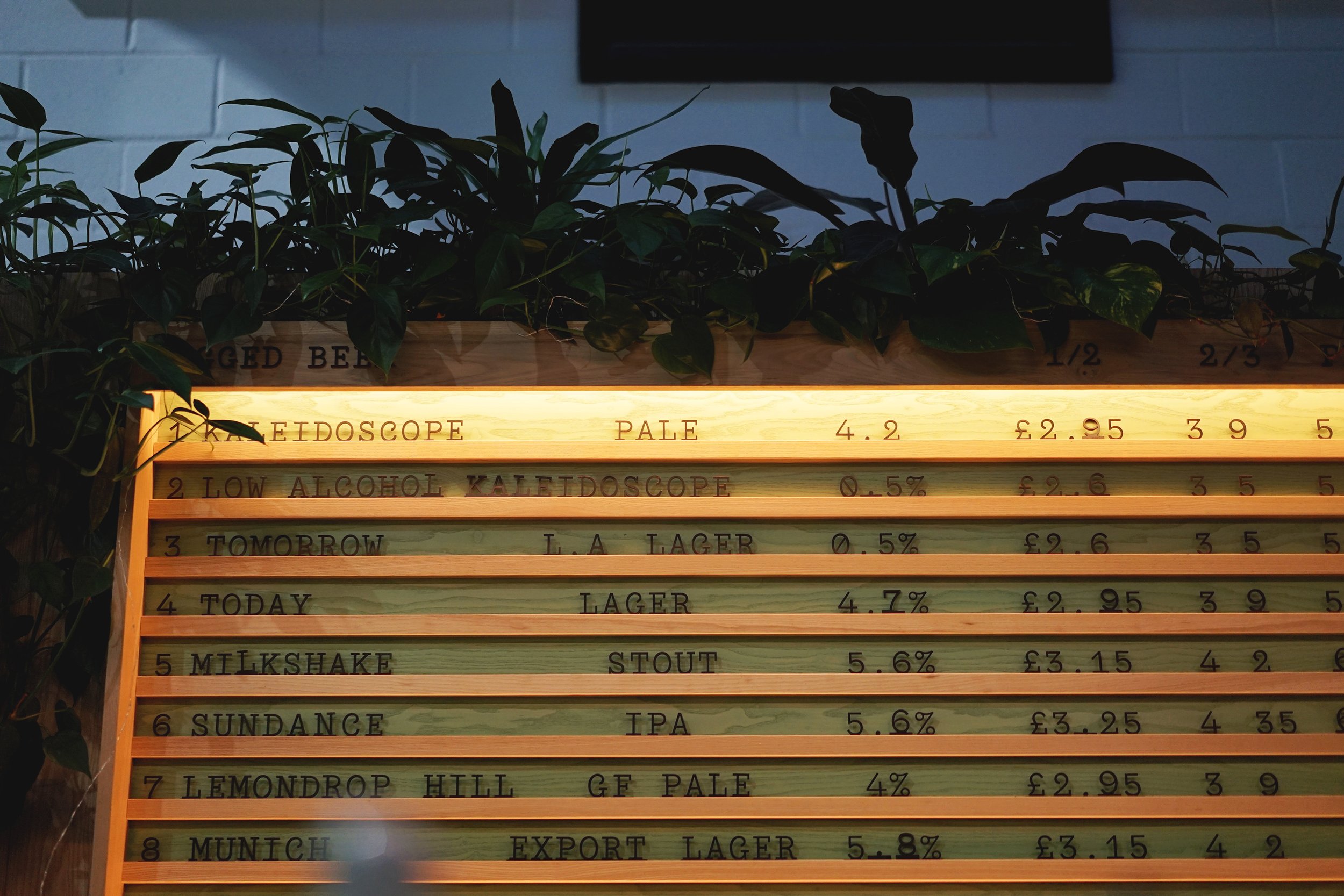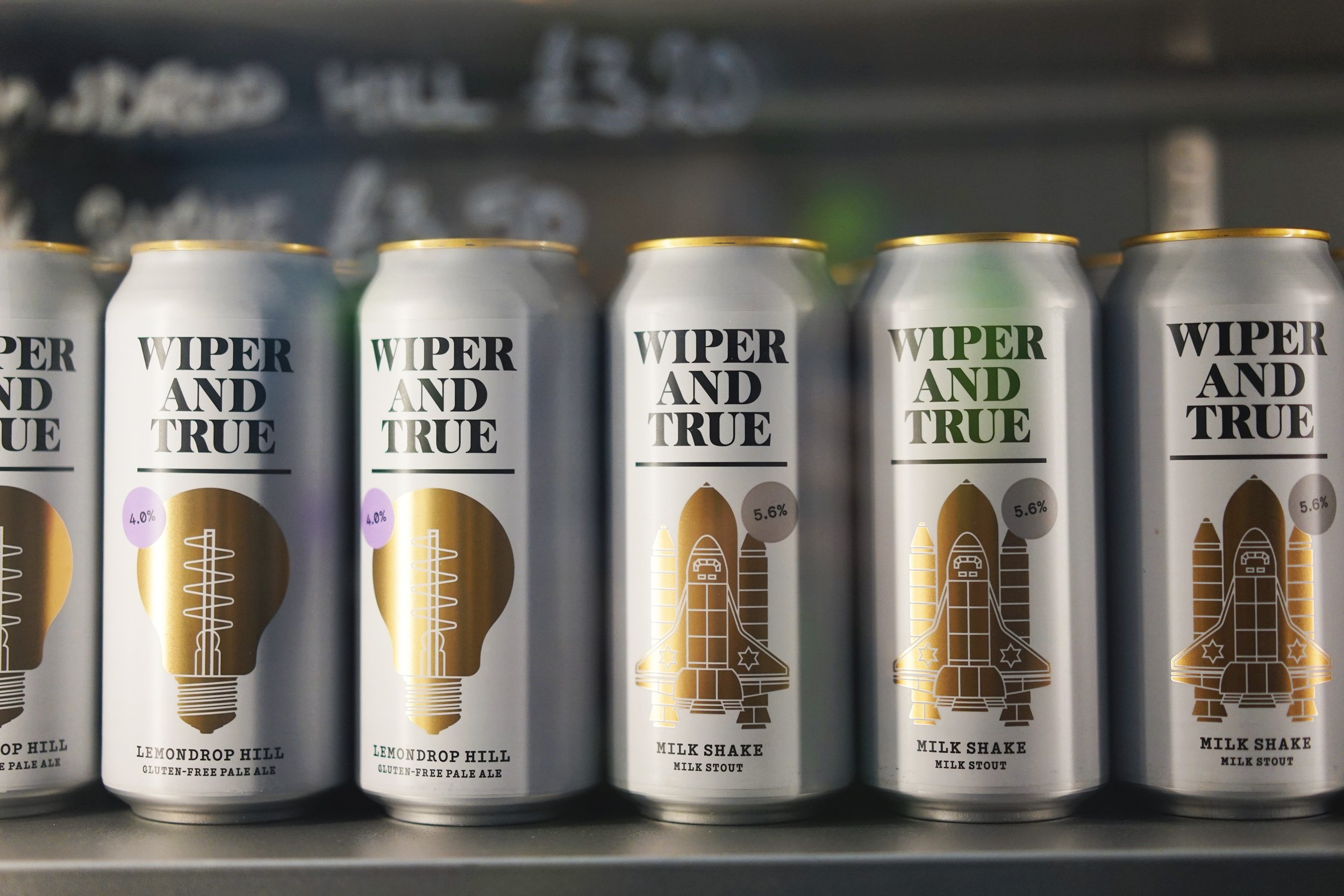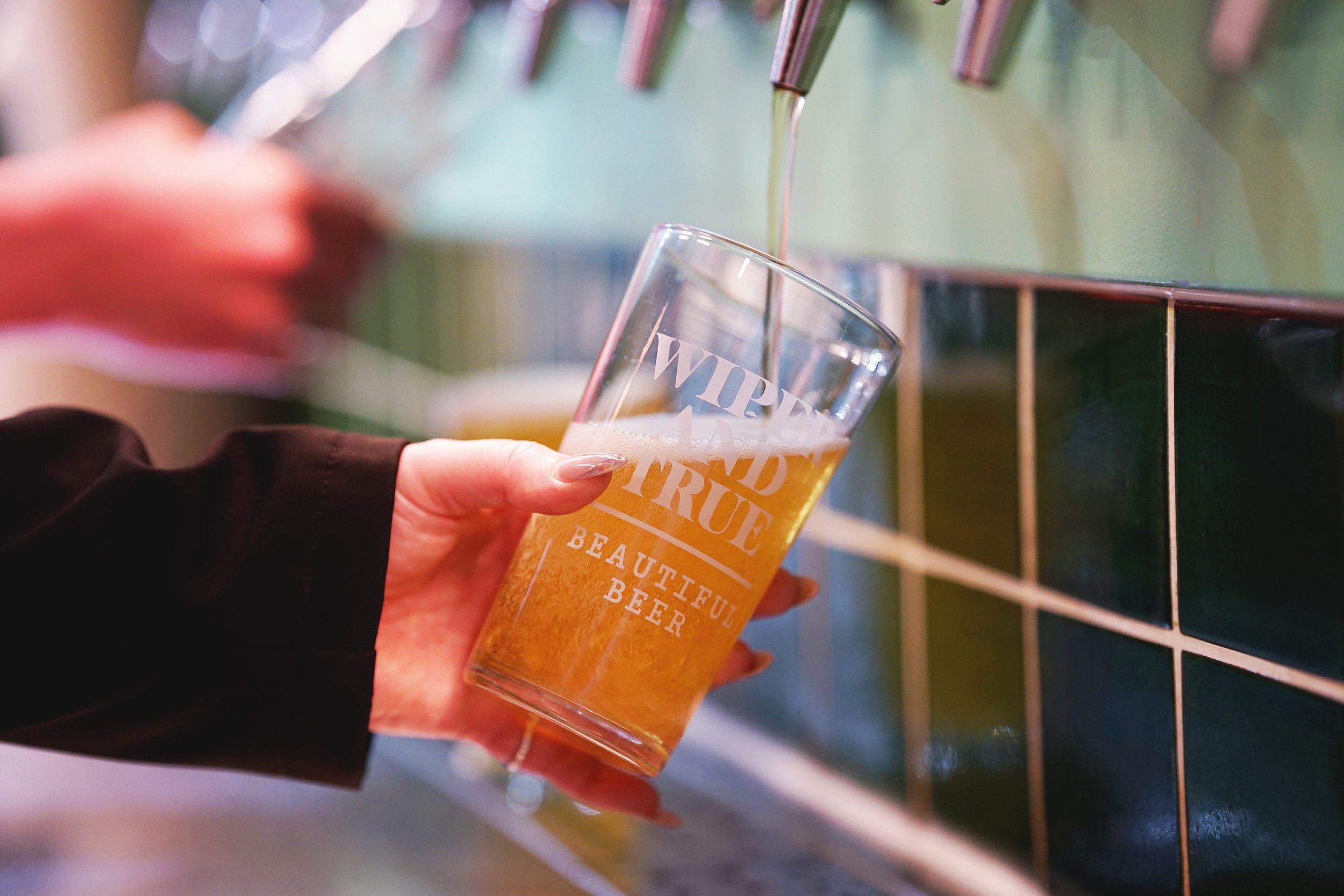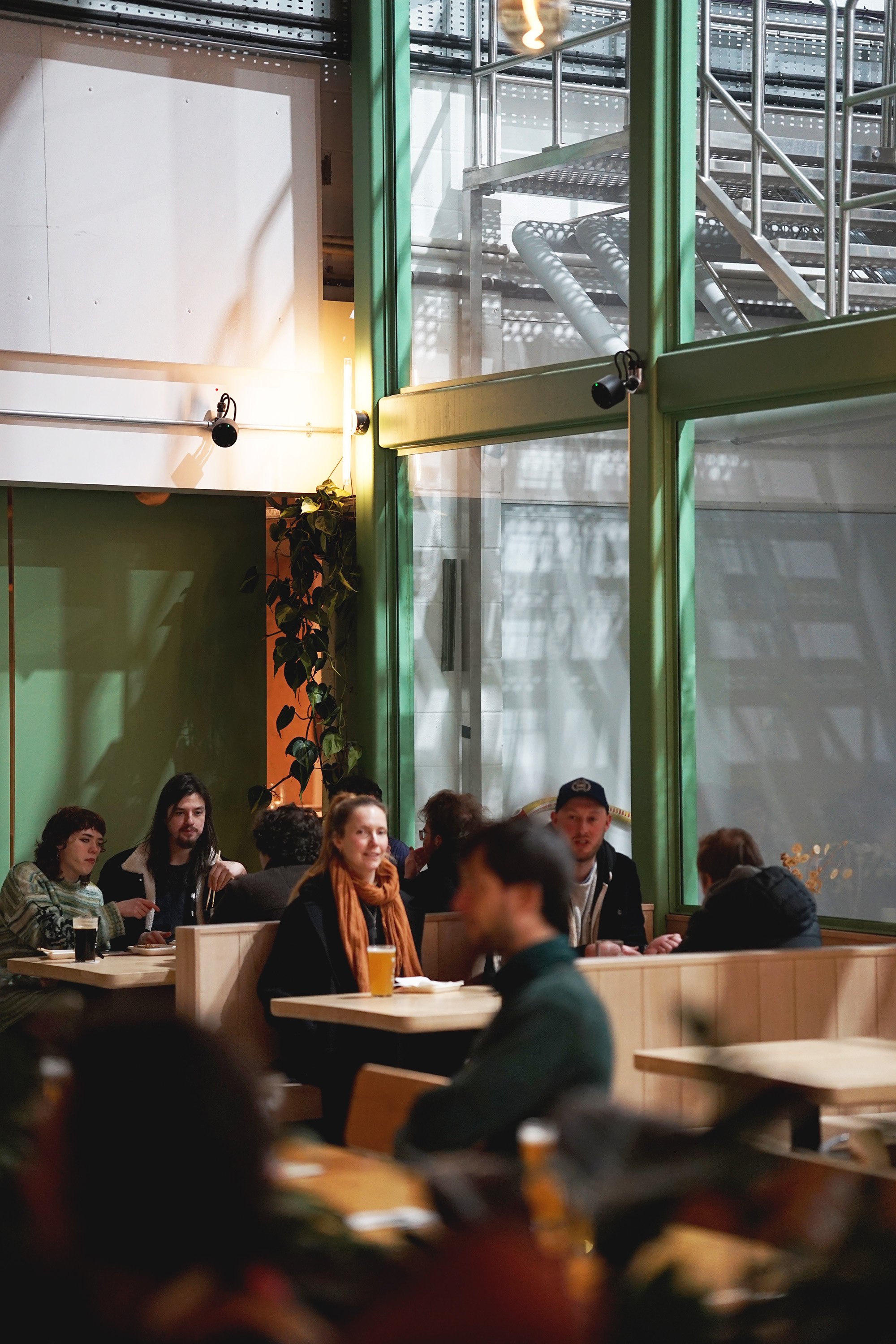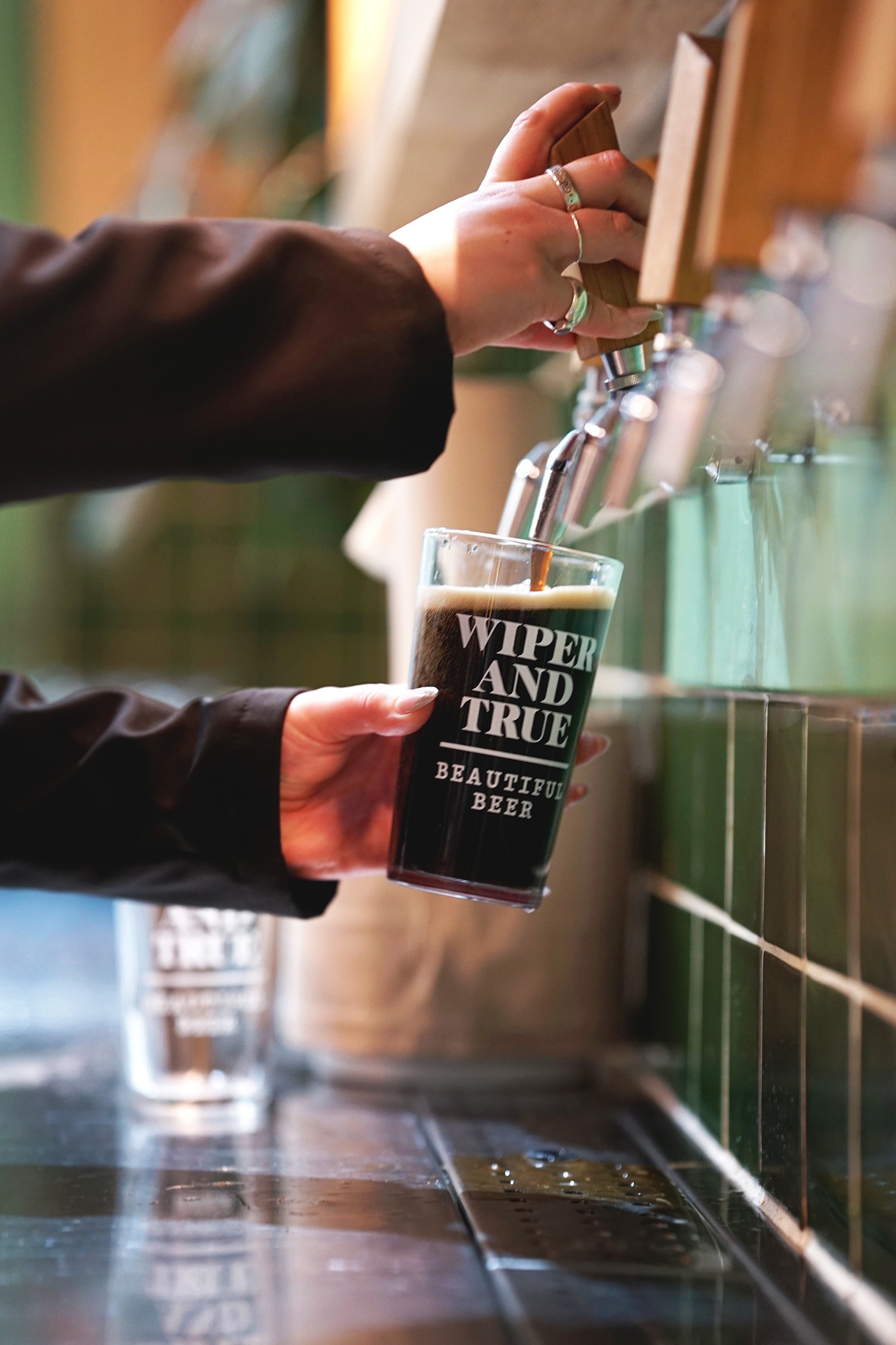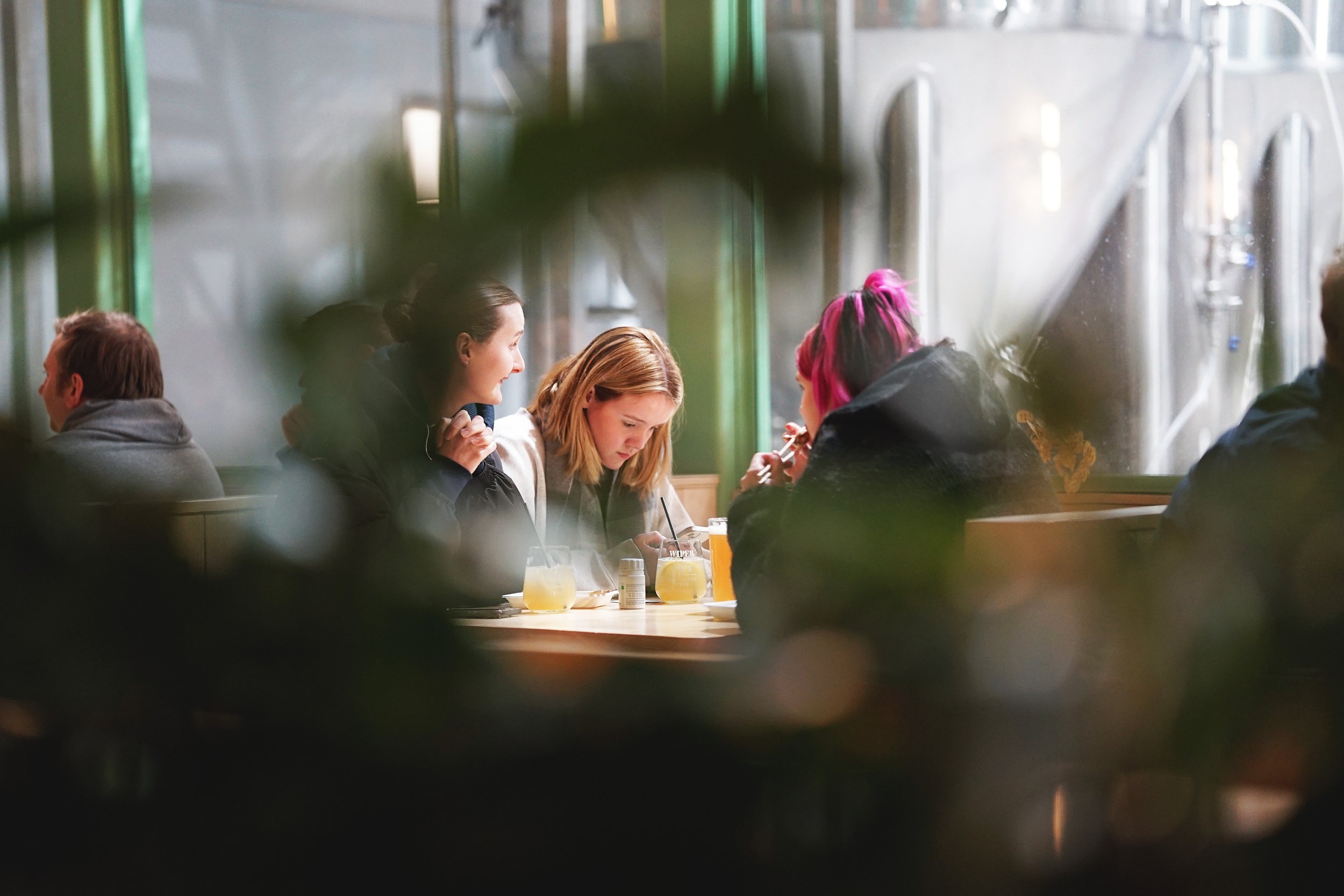Time Must Untangle This — Of Orchard Ale and Bristol’s Wiper and True
“A lot of my favourite beers have massive contradictions when you start trying to describe them,” says Michael Wiper, co-founder and managing director of Bristol’s Wiper and True. “I feel the same about this beer.”
Technically speaking, Orchard Ale is a graf: a beer-cider hybrid that sees both wort and apple juice blended and fermented together. (The name ‘graf’ actually comes from a fictional beverage invented by author Stephen King in The Dark Tower series of novels.) Wild yeasts do their work with as little intervention as possible from the brewers. The finished drink sits somewhere between a cider and a lambic. It has the crispness of a Somerset cider but with a softening background sweetness from the malt which saves it from being too dry.
“It’s just a delicious, crisp, refreshing, weird apple-y beer,” Michael says.
Photography by Matthew Curtis
I’ve come to the brewery’s barrel store taproom in the Bristol neighbourhood of St. Werburgh’s to taste the latest version. It has been almost two years since I last drank Orchard Ale—then known as Old Twelfth Night. Much has changed during this long wait, not least that what used to be a single-vintage beer is now a blend of three vintages. It was only assembled a few hours ago and has not yet been carbonated. It retains just the gentlest sparkle from the youngest part of the blend. It tastes bright and fresh. It balances tart and bitter and sweet with a depth of apples. It is a beer that contains multitudes.
It’s like drinking the brewery’s deepest roots. The apples come from an orchard Michael planted in 2010 with his wife, Francesca—he made cider long before he ever brewed beer. “Looking back, it was a bit silly,” Michael tells me. “It’s 50 trees. That’s quite a handful as a hobby, but nowhere near big enough to be commercially sensible. We just did it for fun, really.”
It wasn’t until a few years later, after Michael had moved on to co-found Wiper and True, that the idea of making a graf came about. He was inspired by a talk on saisons given during Carnival Brettanomyces, a beer festival in Amsterdam dedicated to wild and spontaneously fermented beers.
“We came away and thought what could we bring to this world of brett and wild saison? How would we differentiate Wiper and True beer rather than just buying the standard lambic?” Michael says. “And I was like, well, we’ve got this orchard…” For help making the wort for this unfamiliar style, Michael turned to Jonny Mills of Mills Brewing in Berkeley, Gloucestershire.
"While the premise was the same as our Foxbic,” Jonny says, of Mills Brewing’s own graf brewed in collaboration with Oliver’s Cider, “they decided to go a different direction on several recipe and process points. "These choices took their co-ferments to a very different place.
The apples for Orchard Ale were less acidic than those used in Foxbic, which made it a much softer beer. Foxbic contains equal proportions of wort and juice; Orchard Ale was one part juice and nine parts wort that had been filtered through apple pulp to take on some extra flavour.
““We ended up going from something we thought would be a write-off to something we’ve been immensely happy with.””
"I think they used Simcoe in their first batch, which was really singing even after a year in barrel," Jonny says. "The extra alpha [acid in the hops] also tempered the acid production in fermentation compared to our use of aged hops. They also did an ale mash, rather than turbid, which may have led to the relatively clean flavours."
"We loved the resulting beer," Jonny continues. "[It's] amazing how many different flavours can be coaxed out of spontaneous co-ferments, despite their relatively simple recipes."
The first two editions of Orchard Ale (then Old Twelfth Night), released in early 2020 and 2021 were made from apples harvested in 2017 and 2018 respectively, each having spent a little over two years fermenting in wooden casks.
The version made in 2019 moved slower. When I first spoke to Michael for this story—in the summer of 2022—it looked as though it might be ready for early 2023, a year off the pace set by the previous two editions. “When we first made it we were all full of excitement and very optimistic,” he says. “We tried the beer at regular intervals and,” he pauses to find the right word, “it was awful.”
As a result, barrels were piling up and space was tight. The brewery had not yet opened its new, much larger, site in Old Market, a 15 minute walk east of Bristol city centre, and was still in its original site at St Werburgh’s. Juice from 2020 and 2021 was already queued up behind the laggard 2019 vintage, and the fruit from 2022 was ripening for harvest.
But as much as Michael needed to get 2019’s vintage out of the door, it just wasn’t ready. “There were some flavours and aromas coming up that you’d think we’ll never fix,” he continues. “Nail varnish remover and acetone and high fusel alcohols and all these assertive smells that give you a headache. We lost hope with it.”
***
In the UK’s increasingly mature craft beer market, successful breweries often stand out by becoming known for one thing. If you want the juiciest tropical hops, you go to Verdant. If you want the crispest lagers, you go to Utopian or Lost and Grounded. If you want the most elegant wild beers, you go to Mills.
Wiper and True is not known for one thing. It is a generalist’s brewery. Its best seller, Kaleidoscope, is a 4.2% pale ale made with Citra, Simcoe, and Mosaic. The second-best seller is Tomorrow, an alcohol-free lager that only launched in January of this year, but is the brewery’s fastest-growing product to date. Third is Milk Shake, a 5.6% milk stout that’s been popular for almost as long as craft beer has existed in the UK.
“If we started Wiper and True today, I think we’d struggle,” Michael acknowledges. “I’m grateful we started when we did.”
Michael started brewing beer with Wiper and True's other co-founder, Al True, not long after planting the orchard. They were homebrewing at first but, encouraged by positive reactions to their beers, decided to pursue it further. They founded the brewery in 2012, brewing nomadically at first, and eventually opening their own site at St Werburgh's three years later.
Since then, Michael has set the brewery’s course on “Beautiful Beer.” He applies this not just to the beer itself but to everything about the brewery: its branding, its marketing, how it treats its staff and suppliers, how it makes drinkers feel welcomed and included in its taprooms.
The brewery’s new 30,000 square-foot site in Bristol’s Old Market is a manifestation of the team’s ambition, fostered by Michael. On one side is a taproom—huge in comparison to many UK taprooms—bright and airy and filled with potted plants. A small tree grows in a long planter bisecting the space. It’s comfortable, relaxed and welcoming. The bar has a lowered section so wheelchair users can also get their round in. Vast windows line one wall, through which the production side of the building is visible, with two rows of fermenters butting up against the windows.
This too is light and open. Everything is neat and clean, brushed, polished and swept. It is a world away from the old St Werburgh’s site, hunkered down in a concrete shed that formerly housed a commercial printer. “For years we were crammed in, working with no natural light, and all the equipment broke all the time. It was a hard slog,” Michael says. “Now I walk around here and I still have to pinch myself. We’re a year in and it’s still amazing. It works beautifully. Even when we were doing all the drawings, and we’d got the keys to the building, I still didn’t realise it would be like this. I’m madly in love with it.”
The new site also allows Wiper and True to employ two very important tools. The first is carbon capture, a process that until fairly recently was only usually seen in march larger breweries. Carbon dioxide from the brewery’s fermenters is captured, stripped of impurities or “scrubbed”, compressed into a liquid, and held in a large tank. This stands outside the brewery adorned with Wiper and True’s rocket motif, a beacon drawing drinkers into its taproom.
“We bought tools to measure the purity; it’s purer than the stuff we were buying in,” Michael says. At current prices, he expects this to pay for itself within two years. More importantly, it brings security. “There have been famous incidents over the last couple years where brewers haven’t been able to get CO₂. That stops the whole production line and can wipe hundreds of thousands of pounds off your business straight away,” Michael says. It will also save 70 tonnes of carbon emissions in a year, a figure which will grow as the brewery expands.
The second tool is a reverse osmosis dealcoholiser, which the brewery uses to remove the alcohol from beers like Tomorrow, and the low alcohol version of Kaleidoscope, which launched in January 2024. “That’s going to be a big push for us for the next… well, for a long time actually,” Michael says. “That’s what the whole business is galvanising around at the moment.”
Installing a dealcoholiser is not something a brewery does lightly: the equipment is a huge expense, but so too is the floor space it requires, as well as the staff training, and the effort in recipe research and development to make owning one worthwhile.
Michael has tweaked the recipe to make dealcoholised Kaleidoscope taste fuller and more like its alcoholic sibling. “I [was] so happy with the first batch off the line. It’s absolutely amazing. I was sitting drinking one yesterday at lunch and forgot that it was alcohol free,” he says.
This major investment has turned heads in the industry, not least among brewers who specialise in alcohol-free beers. “I was equal parts envious of and delighted for Wiper and True,” says Jordan Childs, co-founder and Chief Production Officer at low-and-no-alcohol brewery Mash Gang.
For Jordan, it comes as proof that running a small, independent beer brand remains a good bet even at a time when much of the news—of breweries closing and venues struggling—seems to suggest otherwise. “It’s not a small statement by any means,” he says. “It’s a large and long-term commitment that I feel means the beer industry has a vision that Nolo [no-and-low-alcohol beer] is here to stay.”
The team at Wiper and True have known for years that alcohol-free beer would play a significant part in the brewery’s future, and had planned to make 10% to 20% of their revenue from it within five years. After tasting the alcohol-free Kaleidoscope, Michael says that role could be much bigger.
“I’m very confident that we are about to put out the best [alcohol-free pale ale] on the market,” he tells me. “It’s such a good alternative to [alcoholic] beer that it can be a game changer. Now I’m thinking about this really driving the direction of our business. It’s about this beautiful beer without having to have alcohol in it. That just opens up so much for our consumers and the team.”
St Werburgh’s is typical of where the modern era of British beer began and where much of it still is; Old Market feels like where the best of British beer is heading. The road, though, is far from smooth. Soon after opening the Old Market site in summer 2022, the brewery found itself facing difficult trading conditions. That winter was hard for the hospitality industry as the cost of living crisis began to bite. “Most of our time is still problem solving,” Michael says. “Our gas bill has just gone up by £70,000. How do we work around that?”
For now it looks like growth is the only answer. Wiper and True has doubled its trade sales, including a deal to sell casks to Fuller’s pubs, but with costs rising at every turn this growth has merely allowed the brewery to remain afloat where smaller ones would have gone under, as many others have over the last few months. “All the places that we’re selling to are selling less volume,” Michael says, “so we need to outpace that with bringing more and more customers in, and it’s getting more competitive to do. Traditionally, in craft, we would never push on price, and now it’s getting very price sensitive. It’s chaotic out there.”
““Now I’m thinking about this really driving the direction of our business. It’s about this beautiful beer without having to have alcohol in it.””
To outpace the chaos, Wiper and True is already adding more brewing capacity to both sites. At St Werburgh’s a new 10 hectolitre brew kit will be dedicated to brewing mixed fermentation beers. At Old Market, producing “clean” beer, new brewing and fermenting vessels will allow the brewery to step up from brewing two batches of beer per day to three from February 2024.
***
Opening the Old Market site brought a pause in Wiper and True’s mixed fermentation brewing, and with it time to rethink that side of the brewery’s operations. “We made some beers that we were proud of and they went down well, but I don’t think we nailed our brand approach,” Michael says.
The new version of Orchard Ale signposts not so much a return to this side of brewing as a restart. The wayward 2019 vintage of what was Old Twelfth Night finally came good at the same time as the vintages stacked up behind it—hence its slight shape-shift into a blend. “We ended up going from something we thought would be a write-off to something we’ve been immensely happy with,” Michael says. “We’re usually very critical of our beer but this is one of those ones we enjoy sitting back and relaxing into.”
Michael expects to release it at last around Valentine’s Day 2024, followed by the new mixed fermentation beers in the following summer. These will shift from monthly to quarterly, and from cans to 375ml bottles. “Maybe it’s post-cost of living [crisis], maybe it’s just as peoples’ tastes are changing, but to fork out for a mixed ferm 750ml, there’s not that many people out there who want that,” Michael says.
The transformations that have reshaped Orchard Ale into a more considered and complex drink mirror those taking place at Wiper and True. While the beer may have lost a few of its old name’s allusions—to celebration, seasonality, wassailing—its new name still shows the beer's dual nature. It fits this drink that spans apples and barley, cider and beer. It fits this brewery that doesn't just do one thing but does many: beer with alcohol and beer without; clean, modern, commercial beers and beers that are something else, something slower, something rooted in the orchard where everything began. And all of it beautiful.





















